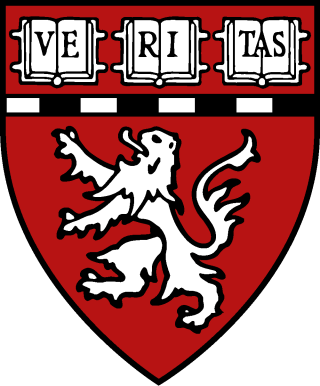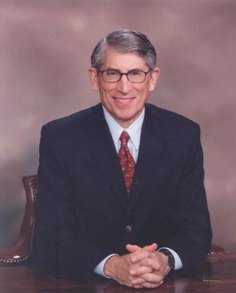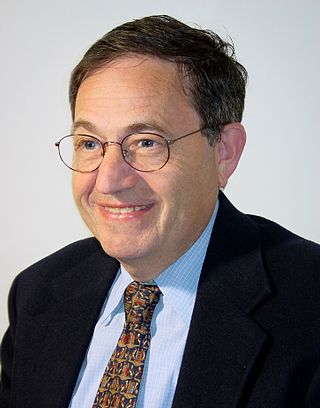
Harvard Medical School (HMS) is the graduate medical school of Harvard University and is located in the Longwood Medical Area in Boston, Massachusetts. Founded in 1782, HMS is one of the oldest medical schools in the United States. HMS is affiliated with several teaching hospitals in the Boston area. Affiliated teaching hospitals and research institutes include Dana–Farber Cancer Institute, Massachusetts General Hospital, Brigham and Women's Hospital, Beth Israel Deaconess Medical Center, Boston Children's Hospital, McLean Hospital, Cambridge Health Alliance, The Baker Center for Children and Families, and Spaulding Rehabilitation Hospital.

Mass General Brigham is a not-for-profit, integrated health care system that is a national leader in medical research, teaching, and patient care. It is the largest hospital-based research enterprise in the United States, with annual funding of more than $2 billion. The system's annual revenue was nearly $18 billion in 2022. It is also an educational institution, founded by Brigham and Women's Hospital and Massachusetts General Hospital. The system provides clinical care through two academic hospitals, three specialty hospitals, seven community hospitals, home care services, a health insurance plan, and a robust network of specialty practices, urgent care facilities, and outpatient clinics/surgical centers. It is the largest private employer in Massachusetts. In 2023, the system reported that from 2017–2021 its overall economic impact was $53.4 billion – more than the annual state budget.

Brigham and Women's Hospital (BWH) is the second largest teaching hospital of Harvard Medical School and the largest hospital in the Longwood Medical Area in Boston, Massachusetts. Along with Massachusetts General Hospital, it is one of the two founding members of Mass General Brigham, the largest healthcare provider in Massachusetts. Robert Higgins, MD, MSHA serves as the hospital's current president.
Dana–Farber Cancer Institute is a comprehensive cancer treatment and research institution in Boston, Massachusetts. Dana–Farber is the founding member of Dana–Farber/Harvard Cancer Center, Harvard's Comprehensive Cancer Center designated by the National Cancer Institute, and one of the 15 clinical affiliates and research institutes of Harvard Medical School.
Jerry Avorn' is a professor of medicine at Harvard Medical School and Chief Emeritus of the Division of Pharmacoepidemiology and Pharmacoeconomics at Brigham and Women’s Hospital. He founded one of the largest programs using health care utilization data to track medication use and outcomes, and invented the practice of "academic detailing" in which pharmacists, nurses, and physicians educate doctors about cost-effective prescribing practices using the same tactics that drug companies employ to market their products. He received a B.A. from Columbia University in 1969 and M.D. from Harvard Medical School in 1974.
Dr. Kate Lorig, Dr.P.H., is an American professor at the Stanford University School of Medicine. She is also the director of the Stanford Patient Education Research Center. She is known for her work on chronic disease and patient education, has published several books and peer-reviewed journal articles in those fields, and developed a peer-led self-management course for patients with chronic diseases. Lorig is herself a chronic disease patient, having been diagnosed with Gaucher's disease at the age of three.

Elizabeth Nabel is an American cardiologist and Executive Vice President of Strategy at ModeX Therapeutics and OPKO Health. Prior to this role, she served as President of Brigham Health and its Brigham and Women's Hospital, Professor of Medicine at Harvard Medical School, and Director of the NIH's National Heart, Lung, and Blood Institute.
Michael D. Lockshin is an American professor and medical researcher. He is known for his work as a researcher of autoimmune diseases, with focus on antiphospholipid syndrome and lupus. He is Professor Emeritus of Medicine and the Director Emeritus of the Barbara Volcker Center for Women and Rheumatic Disease at Hospital for Special Surgery. He retired from HSS on January 31st, 2023.

Lawrence H. Cohn, was an American-born pioneering cardiac surgeon, researcher, and medical educator. He had been on the surgical staff at Harvard Medical School since 1971 and had been a Professor of Surgery at Harvard Medical School since 1980. In 2000, he was awarded the first endowed Chair in Cardiac Surgery at Harvard Medical School.
David Davis Rutstein (1909-1986) was a long-time faculty member at Harvard Medical School and an advocate for preventive medicine. He was one of the first physicians to use television as an outreach tool to inform the public about health concerns and research. Rutstein also played a national role in the organization of medical care in the United States, the integration of preventive medicine into patient care, and the measurement of medical outcomes.

Martin A. Samuels, MD, DSc (hon), FAAN, MACP, FRCP, FANA, was an American physician, neurologist and medical educator whose unique teaching style and contributions, accessible to a wide audience, were widely known and celebrated. He wrote and spoke on the relationships between neurology and the rest of medicine, and linked the nervous system with cardiac function, highlighting the mechanisms and prevention of neurogenic cardiac disease.
Laurie Hollis Glimcher is an American physician-scientist who was appointed president and CEO of Dana–Farber Cancer Institute in October 2016. She was elected a Member of the American Philosophical Society in 2019.
Andrew D. Luster is the Persis, Cyrus and Marlow B. Harrison Professor of Medicine at Harvard Medical School, and the Chief of the Division of Rheumatology, Allergy and Immunology at Massachusetts General Hospital. He is Director of its Research Center for Immunology and Inflammatory Diseases, and a member of the Dana-Farber/Harvard Cancer Center's Cancer Immunology program.
Ephraim Engleman was an American rheumatologist and a Clinical Professor of Medicine at the University of California, San Francisco. He had a major national and international impact on rheumatology during more than six decades, and wrote more than one hundred scientific and medical papers.

Ferenc Andras Jolesz was a Hungarian-American physician and scientist best known for his research on image guided therapy, the process by which information derived from diagnostic imaging is used to improve the localization and targeting of diseased tissue to monitor and control treatment during surgical and interventional procedures. He pioneered the field of Magnetic Resonance Imaging-guided interventions and introduced of a variety of new medical procedures based on novel combinations of imaging and therapy delivery.
Howard Haym Hiatt is a medical researcher involved with the discovery of messenger RNA. He was the past chair of the department of medicine at Beth Israel Hospital in Boston from 1963-1972. He was past dean of the Harvard School of Public Health from 1972–1984. He was co-founder and associate chief of the Division of Social Medicine and Health Inequalities at the Brigham and Women's Hospital, and was also the Associate Chief of the hospital's Division of Global Health Equity. He was a founding head of the cancer division of Beth Israel Hospital. He was a member of the team at the Pasteur Institute, Paris, led by Francois Jacob and Jacques Monod, which first identified and described messenger RNA, and he was part of the team led by James Watson that was among the first to demonstrate messenger RNA in mammalian cells.
Terri H. Finkel is an American pediatric rheumatologist and immunologist who is the Children's Foundation of Memphis Endowed Chair and tenured professor of pediatrics at the University of Tennessee Health Science Center and St. Jude Children's Research Hospital. Previously, she was the pediatrician-in-chief, chair of pediatrics and chief scientific officer at Nemours Children's Hospital. She is known for her research into autoimmunity, AIDS, juvenile rheumatoid arthritis, lupus, and cancer. Her work has been recognized in more than 200 publications, 10 U.S. patents, and 4 licensed technologies. Finkel has been placed in the top one percent of American pediatric rheumatologists by U.S. News & World Report. Her numerous honors include being named among America's Top Doctors by Castle Connolly every year since 2011 and induction into the Colorado Women's Hall of Fame in 1996.
Dafna D. Gladman, MD, FRCPC, is a Canadian doctor and medical researcher working in the fields of psoriatic arthritis, systemic lupus erythematosus, and rheumatoid arthritis. She is a professor at the University of Toronto Faculty of Medicine and Senior Scientist at the Krembil Research Institute. She is Deputy Director, Centre for Prognosis Studies in the Rheumatic Diseases, Co-Director, Lupus Clinic, Toronto Western Hospital (TWH) and Director, Psoriatic Arthritis Program, Toronto Western Hospital.
Michelle Leech is the Deputy Dean of Medicine at Monash University and an academic clinician-scientist. Leech oversees the delivery of the Monash medical program and maintains an active research profile and clinical practice as a rheumatologist.

Robert H. Carter is an American rheumatologist and physician-scientist serving as the deputy director of the National Institute of Arthritis and Musculoskeletal and Skin Diseases (NIAMS) since 2008. He was the acting director of NIAMS from December 2018 until February 2021.







